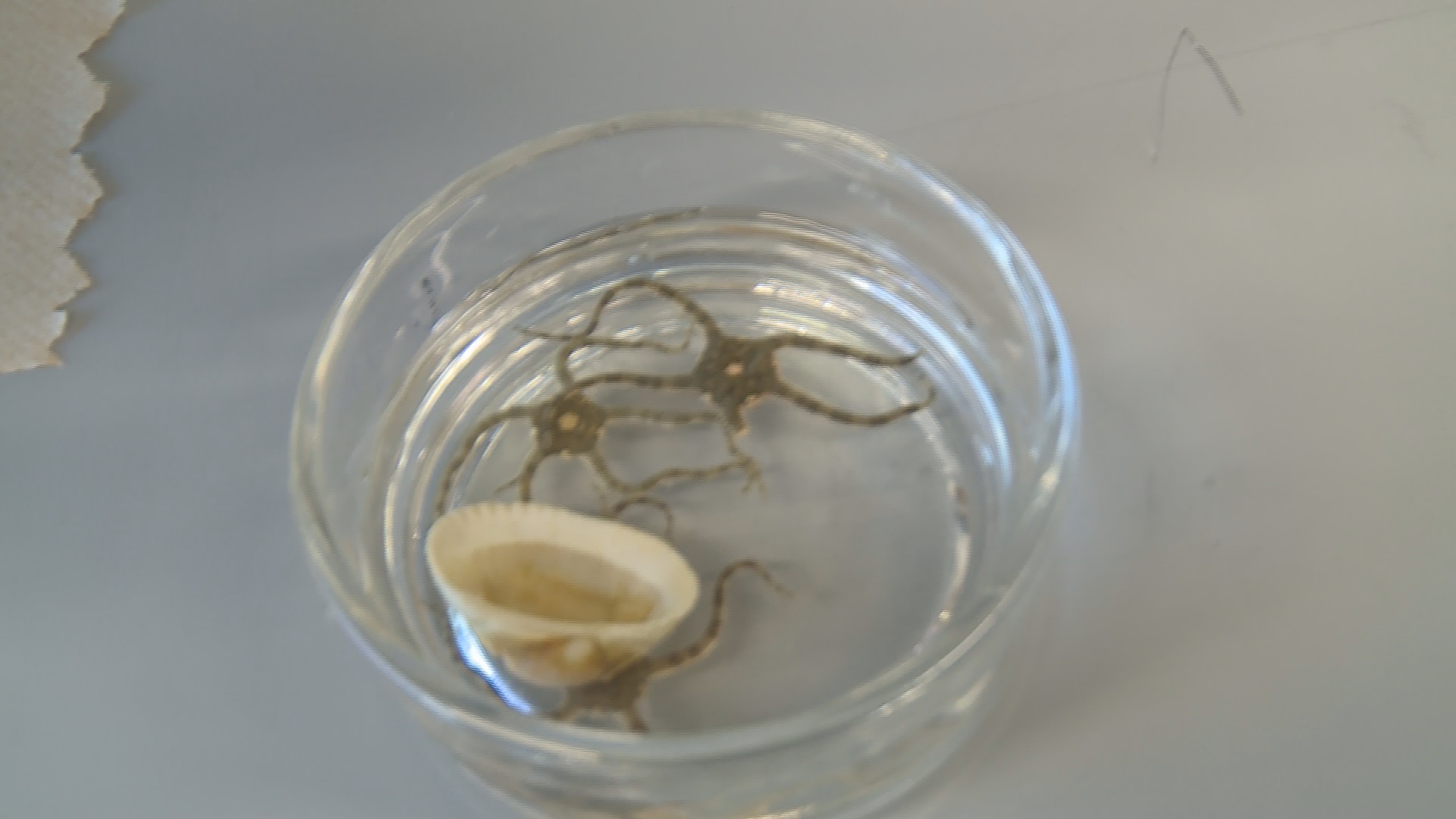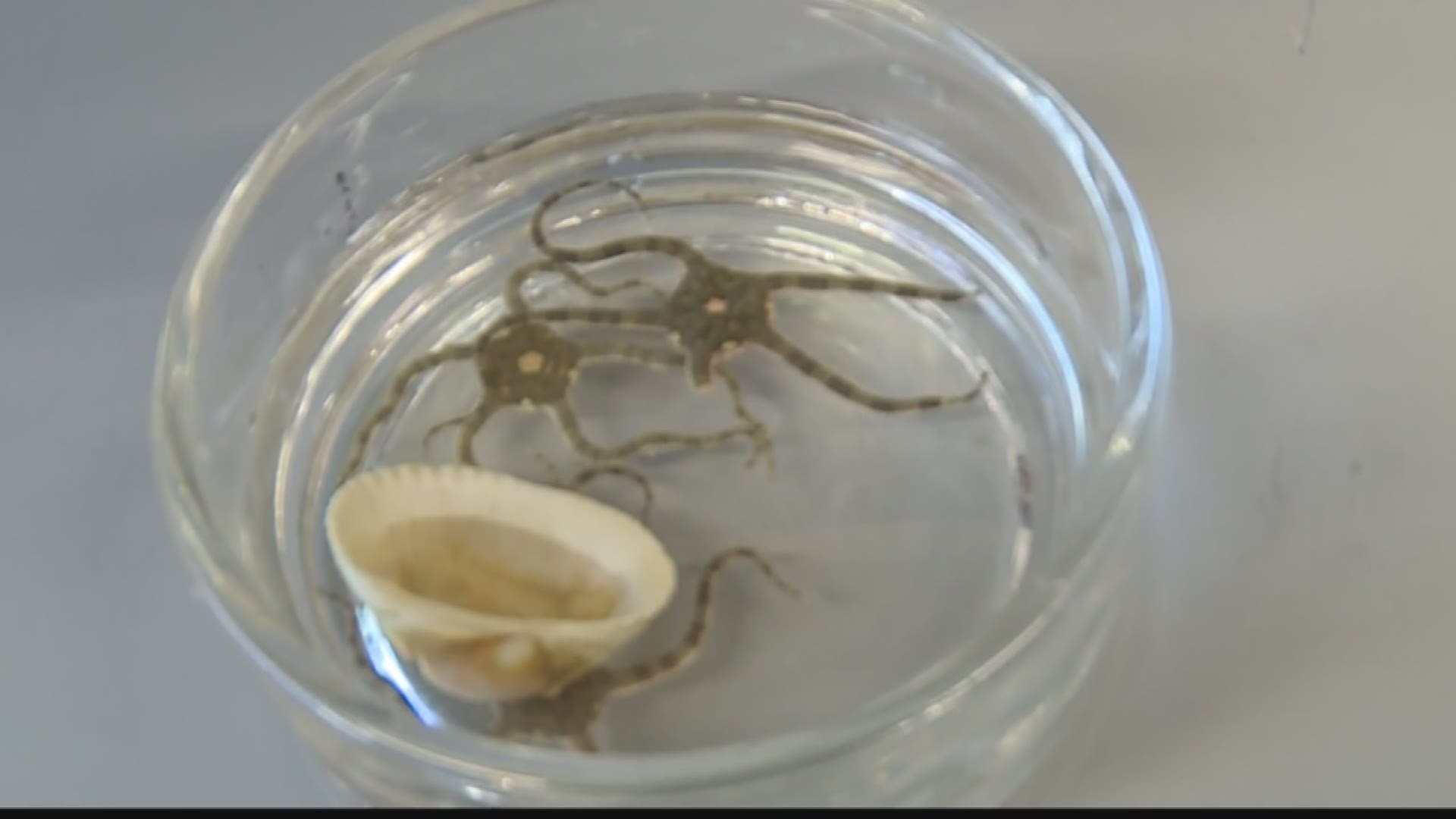JACKSONVILLE, Fla. - Patients with spinal cord damage or brain injuries could one day benefit from some research at the University of North Florida.
Students there are looking at how some animals, specifically echinoderms, can regenerate body parts. The tiny creatures could answer a big question that Dr. Vladamir Mashanov has been asking for a long time in his lab.
Mashanov explains the brittle stars he is studying are not the only animals capable of regenerating. He said finding out what happens deep in their DNA that could translate to a practical use.
"We learn from these marine animals what can eventually help human patients," Mashanov said.
Chelsea Hastings is one of Mashanov’s student researchers.

She has been sequencing the genome of the brittle star and looking to see what makes them tick. Hastings with the help of her classmates have a digital file of DNA on the brittle star that they are using to match the chromosomes: essentially rebuilding a brittle star from the cellular level.
"Before you can understand anything you have to know what genes are being activated," Hastings said.
Mashonov explained that the cells these starfish are using to regenerate do show-up in humans.
"We are born and start growing up, those cells are gone from our central nerveous system and that’s why we can’t regenerate our central nervous system and those guys retain those cells and therefore can regrow," Mashanov said.
He added that the study looks at how the samples respond when they lose an organ, monitoring them for weeks and watching them re-grow. Asking one question, "How can we reactivate those cells in a way to divide again and regenerate new cells," Mashanov said.
An answer he hopes to find.

